An overview of terminology used to describe tactile paving
This glossary provides a list of terms and definitions for detectable warning plates. It can be used as a quick reference guide for technical terms when reading Reliance Foundry blogs about hardscape and pedestrian accessibility.
Reliance Foundry’s tough cast-iron detectable warning plates create more accessible cityscapes while adhering to current ADA and ABA guidelines. Tactile paving can be easily detected by pedestrians with visual impairment and increases safety in busy urban centers.
Detectable warning plate terms
Architectural Barriers Act (ABA)
ABA was one of the first American laws to address accessibility of the built environment, passed by Congress in 1968. It applies to facilities that have been designed, built, or altered using federal funds. Reliance Foundry’s detectable warning plates comply with current ABA guidelines.
Americans with Disabilities Act (ADA)
ADA is an American civil rights law that was passed by congress in 1990. It prohibits any discrimination against those with disabilities in various areas of public life, including transportation and all places open to the public. Reliance Foundry detectable warning plates comply with current ADA guidelines.
Blended transition
A blended transition refers to the section of a curb ramp on a street corner that lowers the sidewalk down to a level landing where a pedestrian can either turn to cross the street, or continue on to the opposite side of the ramp and back onto the sidewalk.

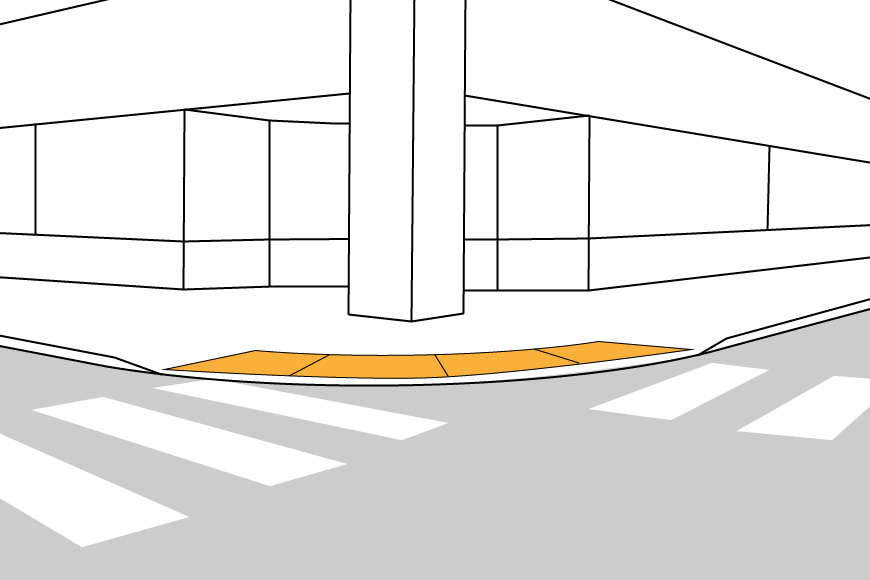
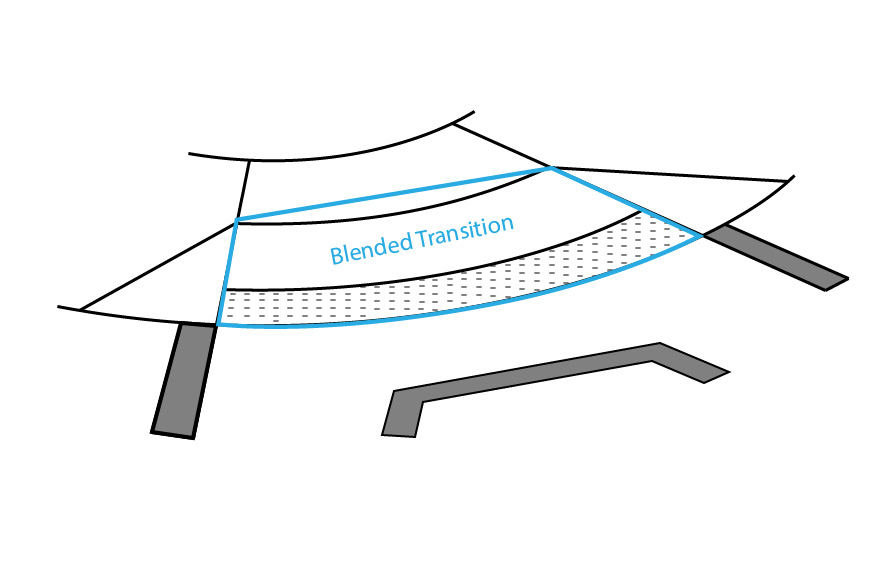
Coefficient of static friction (COF)
The coefficient of static friction refers to the friction force between two objects when neither object is moving. This coefficient of friction is a unitless ratio. Values typically range from zero to one, where zero means no friction, and one means the frictional force is equal to the normal force. Reliance Foundry detectable warning plates have a COF of 0.9.
Curb ramp
A curb ramp refers to a short ramp that creates a gentle slope from curbed sidewalk to roadway for a safer transition. A curb ramp creates an accessible route for those with visual impairment, as well as for wheelchairs. There are three common types of curb ramps: blended transitions, parallel curb ramps, and perpendicular curb ramps.
Detectable warning plate (DWP)
A detectable warning plate is a tactile warning plate or ground surface indicator, with raised bumps or truncated domes that can be felt by pedestrians underfoot or by a cane. They are typically placed at curb ramps to signify the change from pedestrian route to vehicular route. They may also be used at subway platforms, or before a step or escalator where there are changes in levels. Many different sizes and types of detectable warning plates are available.
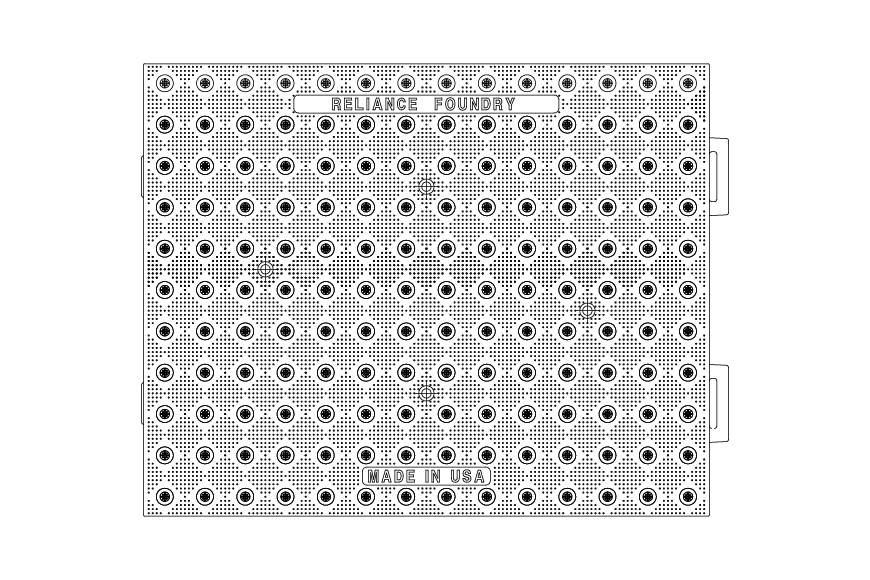
Detectable warning plates are tactile paving squares that warn visually-impaired pedestrians of upcoming hazards.
Dome size
Dome size refers to the measurement of each circular truncated dome in the detectable warning plate. The dome size is regulated by the ADA, and the base diameter should be between 0.9–1.4 inches. The top diameter should be 50% of the base diameter minimum, to 65% of the base diameter maximum. The height of the dome should be 0.2 inches.
Dome spacing
Dome spacing is the space between adjacent domes in the detectable warning plate. Dome spacing is regulated by the ADA and the center-to-center spacing should be between 1.6–2.4 inches. The base-to-base spacing should be a minimum of 0.65 inches.
Parallel curb ramp
A parallel curb ramp is a slope made up of two ramps that are joined in the middle by a landing that is level with the roadway. These ramps are parallel to the curb and often take up the entire width of the sidewalk. The pedestrian can immediately transition to the sidewalk after stepping onto the ramp, as there are no changes in levels on both sides of the ramp. Straight section detectable warning plates can be used on parallel curb ramps.
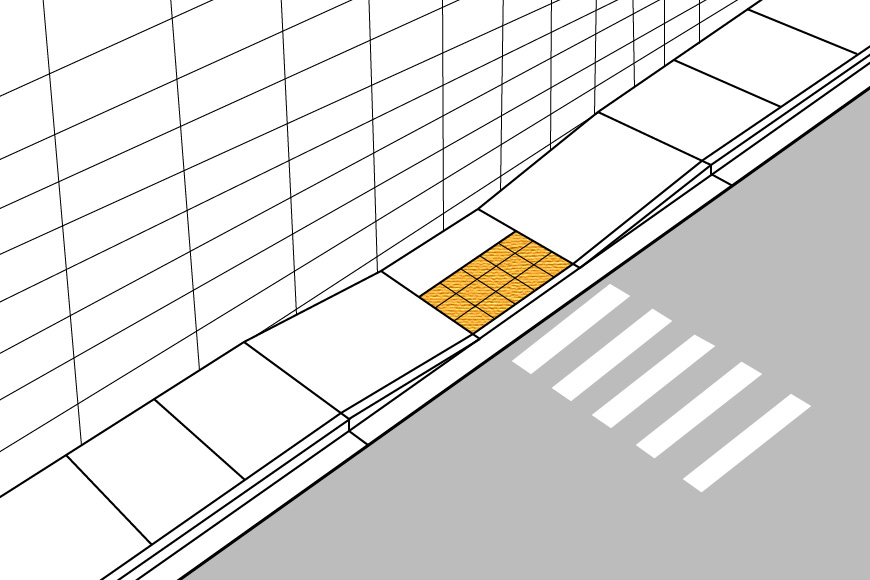
A parallel curb ramp consists of two ramps that are joined in the middle by a landing that is level with the roadway.
Patina
Patina refers to the corrosion that occurs on a metal surface due to oxidation, resulting in an oxidized layer and changing its color. Once formed, this patina layer is permanent throughout the service life of the product, and protects the metal from rusting through.
Perpendicular curb ramp
A perpendicular curb ramp is a type of mid-block curb ramp that intersects the curb at a 90-degree angle. A landing is required so that the pedestrian can turn 90 degrees to the left or right without walking onto any sections with a difference in levels. Straight section detectable warning plates can be used on these ramps.
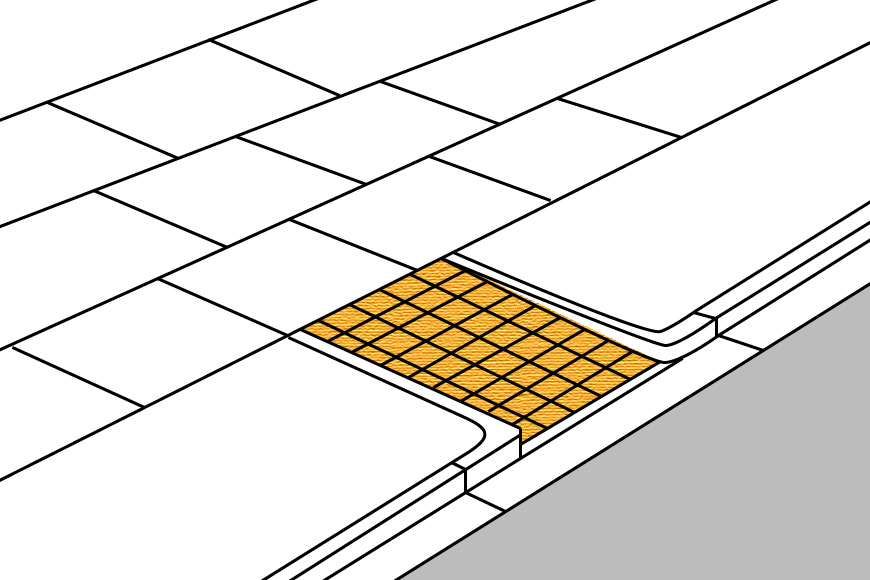
A perpendicular curb ramp intersects the curb at a 90-degree angle.
Straight section plates
Detectable warning plates with straight edges all around. These plates are meant for curb ramps with straight edges, such as parallel or perpendicular curb ramps.
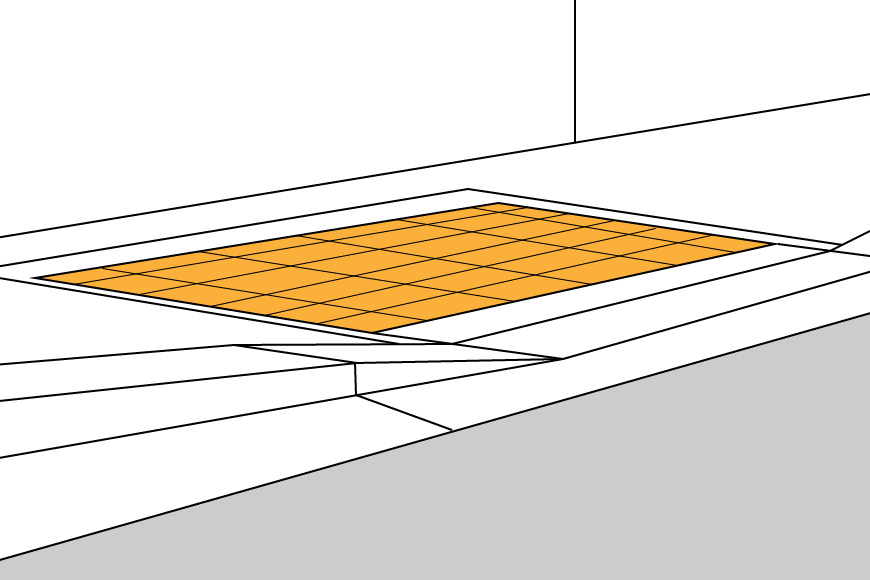
Straight-section detectable warning plates have straight edges on all sides.
Tactile paving
Tactile paving describes any type of paving that can be felt by pedestrians, either underfoot or with a cane, alerting them of any approaching hazards. Detectable warning plates, tactile surface indicators, and tactile warning surfaces are all types of tactile paving. First used at pedestrian crossings in Japan, tactile paving was then adopted by the UK, US, and rest of the world.
Truncated dome
A dome where the apex is replaced with a plane section. A series of these truncated domes create a pattern on detectable warning plates that can be felt by a cane or underfoot. All domes on detectable warning plates must be truncated to eliminate tripping hazards for pedestrians and wheelchair users.
Visual contrast
Visual contrast is where the difference between two colors is clear to the viewer. The color of detectable warning plates should contrast effectively with the surrounding surface. According to the ADA, detectable warning surfaces must contrast visually with adjacent walking surfaces by using either light-colored plates on dark surfaces, or dark-colored plates on light surfaces.
